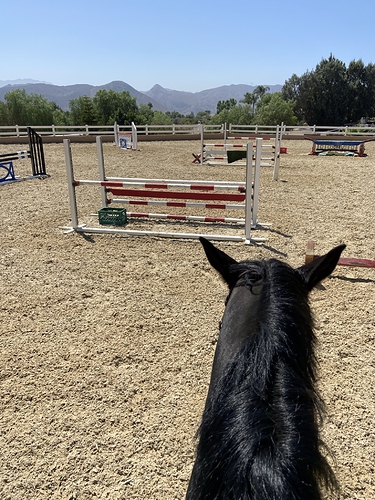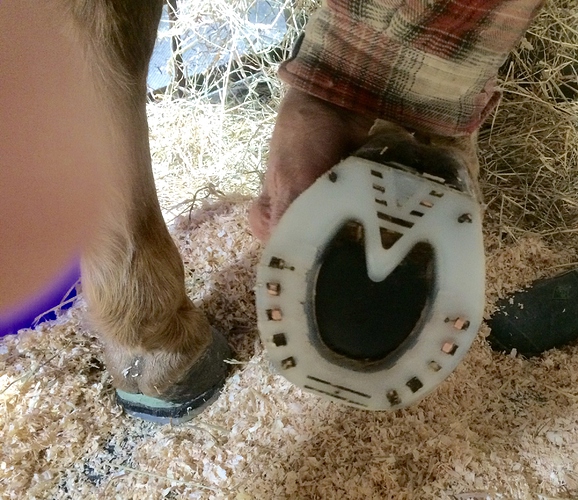Hi All,
NOT MY HORSE but a horse I’ve posted previously about. Long story short, ~9 year old QH on and off lame (mostly lame) for 2 years in front. Owner’s old farrier did what he could and was happy to give the horse over to my farrier. Owner switched to my veterinarian. Owner has in time (in time) sank some money into diagnostics.
Owner has my vet (who is good), my farrier (who is good) and a local good equine podiatrist (DVM, PhD) all working as a team. Nothing points to structural problems but now to soft tissue. The horse is in plastic wedges and shallow rocker shoes right now to aleve pressure on the DDFT and other structures. Horse was pulled from his herd situation and put into his own paddock. The owner doesn’t want to restrict him to a small paddock like the podiatrist suggested and I gave his some ways to fence the pasture to help the horse move but not have room to run (for example, a lane following the perimeter or a block to the paddock). Horse is in the paddock maybe 8 hrs/day.
Horse is on previcox daily now. Scheduled for ultrasound with a good ultrasound. MRI is too pricey ($4K)
Anyone with experience with DDFT and tendon/ligament inflammation and how long it took to “calm down”? How did you manage your horse?
Thanks!
Again, NOT MY HORSE but a horse and owner I’m great friends with. Thanks!!




 .
.